|
Patrick Henry was born in February of 1952 in Berlin, Maryland to Samuel Henry, Sr., a Navy veteran of World War II, and Marigold Kee Henry from Seaboard, North Carolina. Reared on the Eastern Shore of Maryland, Patrick’s primary and elementary education was at the Flower Street Elementary School in Berlin, and his freshman year of high school was at Worcester County High School. In the fall of 1965, with the integration of the public schools, Patrick attended Stephen Decatur High School, from which he graduated in 1970. He did not attend college immediately following graduation from high school, but several months later he enrolled in Maryland State College, now the University of Maryland Eastern Shore (UMES). At UMES, he majored in art, something he developed an interest in at an early age, but he was basically self-taught. He began painting by numbers when he was a student at Flower Street School. His interest in oil painting and painting began about age 14 or 15. His first painting was sold in 1968 while he was still in high school. Most of his early subjects were of his environment, of servitude, and black leaders, such as Reverend Dr. Martin Luther King, Jr., Stokely Carmichael, H. Rapp Brown, and others of that era. At UMES, his master professors were Ernie Satchell and Jimmie Mosely, his mentor and the art professor for whom the Mosely Gallery at UMES was named. While studying at UMES, Patrick Henry was judged the Most Talented Student. He graduated from UMES in 1975 and was the first in his family to graduate from college. His graduation was a joyous occasion, but it was also a very sad time of his life because his father passed away about the same period. Upon graduation from college, Patrick’s first teaching job was teaching art at his alma mater, Stephen Decatur High School. After two years of teaching, he made the decision to leave the teaching profession and to pursue his art on a permanent basis. His goal was to attend Virginia Commonwealth University and obtain a master’s degree in Art Education. Unfortunately, due to a family crisis, he was asked to return home. He returned to Berlin, helped his brothers with masonry, construction and maintenance work, and pursued oil painting on a part-time basis. However, by the 1980’s, he began to actively pursue his passion. For thirty years, the environment of the Eastern Shore dominated his canvasses. He referred to the Shore as... ...”a land of people: watermen, farmers, brick masons, teachers and day laborers. They live their lives intertwined-knowing each other and the land around them with a depth of knowledge that is not forgotten as the years go by and as the people and the land changed." For Patrick Henry, art is his passion, and he has compared art to his heart beat. For Patrick, art and his heart beat, are synonymous with his existence. They are as intertwined as the land and people of the Eastern Shore of Maryland. Art was also a challenge for him, especially in a place where there is often no appreciation of art, often a lack of understanding of its value, or a need for financial assistance for it to survive or thrive. By the late 1980’s and early 1990’s, Patrick Henry was solely involved in honing his craft and participated in numerous exhibitions throughout the Mid-Atlantic region and various galleries on and off of the Eastern Shore. A show in Annapolis, Maryland exposed his work to collectors beyond the Eastern Shore. A major mural commission at Atlantic General Hospital highlighted his career in the 1990s and his pen and oil graphics were marketed through t-shirts, tote bags and other printed art products. In1996, Patrick was the recipient of the Berlin Award, presented annually to an individual who has by unselfish efforts and dedication, made outstanding contributions in service to the Town of Berlin and the immediate region. Patrick Henry has presented numerous exhibits and as a result has been the recipient of various awards and accolades, including the following: • “Moments: In Color, Geometry, Texture and Light,” which premiered at the Ocean City Center on the Arts, July of 2015. • ‘Ephemeral Moments,’ an exhibit held at the Academy Art Museum in Easton, Maryland, February 4-April 1, 2012. • The “Amusement” series, a 27-piece collection which depicted some of Ocean City’s most memorable amusement and entertainment features was completed. Some of the pieces were purchased as the fifth addition to the Artists of the Eastern Shore Collection established by Dr. Amy Stephens Meekins and family. (2011) The original oil painting ‘Trimper’s Luna Park, Ocean City, Maryland-circa 1925, is prominently displayed in the Teacher Education and Technology Center (TETC), now Conway Hall, at Salisbury University, Salisbury. • The Maryland Life Magazine selected Patrick Henry as the Lower Eastern Shore’s Finest Artist in 2011. • Patrick’s paintings titled “Up! Up! And Away” and “Foggy Harbor-West Ocean City” were added to “Berlin Milling Company” (originally bought by the Reginald Lewis Museum in 2010) became a part of the Reginald Lewis Museum Permanent Art Collection, October 31, 2014. • “Points of Juxtaposition: A Gathering of Eight African-American Artists” was presented at the Mosley Gallery at UMES, February 1-26, 2010. • “Maryland Artist Showcase: Works of Art by Patrick Henry” was presented at the Reginald Lewis Museum, in 2008. • “Patrick Henry: Into the Light,” exhibit was held at the Reginald Lewis Museum of African American History and Culture in Baltimore, Maryland, 2007. • Patrick Henry was named “Delmarva’s Best Local Artist” by Salisbury’s The Daily Times, Salisbury, Maryland, 2005. Over the years, Patrick’s horizon has been broadened and included other subjects than the Eastern Shore. He is also working in a special program to encourage young protégés. The four facets of the program are visual, musical, performing arts, and literary arts. The ultimate goal of the program is to inspire young people to appreciate art, to become great artists, to preserve art and to help it thrive. Patrick also believes that if artists can conquer the seven deadly negative curses of doubt, fear, guilt, limiting beliefs, self-sabotage, jealousy, and addiction, and replace them with positive beliefs of courage, freedom, limitless possibilities, self-love, self-worth, and abstinence, they can succeed. As such, Patrick hopes to mentor young artists, help them believe in their passions, and encourage them to succeed as artists and in life. Even though Patrick’s paintings primarily focuses on rural life and the environment on the Eastern Shore of Maryland, his art inspires others to remember the past and scenes that are rapidly fading from the landscape and their collective memories. Recently, Patrick has presented exhibits at the Germantown School Community Heritage Center in Berlin and the Ward Museum in Salisbury, among other venues. The exhibits at those two locations, showed photographs of local individuals from the Berlin area that had been saved and originally stored in a never-used dishwasher. The photographs included those of African American children at play, displays of vintage automobiles, and workers at a former mansion, among other subjects. A September 2023 exhibit, the “Phillips Canning Factory Show,” is presently on display at the Germantown School Community Heritage Center. The exhibit highlights the operations of the canning factories on the Eastern Shore and its impact on the area through photographs and memories of the people of the local area. It also focuses on the often overlooked cultural impact upon the lives of the people who toiled there, especially many of the women. The exhibit focuses on the canning industry, but it also captures the experiences and memories of many of those women who were employed there, as they worked to supplement their families’ income, to survive, and to care for their families. Patrick Henry is a multi-faceted artist whose roots are deeply imbedded in the Eastern Shore. His portraits and paintings of rural, environmental landscapes, and paintings of local individuals tells a thousand stories of strife and successes, while simultaneously depicting the lives of people who toiled so that future generations could survive and thrive. Patrick’s works show that we are who we are because of the subjects he depicts and that the present generation is standing on their shoulders. As such, it is our responsibility to remember those who paved the way for present and future generations. Patrick Henry, a renowned artist, is also a historical artist, who preserves local Eastern Shore history and culture through his art. Dr. Clara Small
0 Comments
Map of the West Coast of Africa from Sierra Leone to Cape Palmas, including the colony of Liberia Library of Congress 1830 Foundation of the American Colonization Society and the Maryland State Colonization SocietyIn late 1816 the American Colonization Society (ACS) was founded to expatriate free Black Americans to Africa. Soon after, auxiliary branches of the ACS formed in several states, of which Maryland was a prominent branch. They all shared the goal of giving freed African Americans equality and freedom denied to them in American society. However, this came with a catch. To claim this promised liberty, African Americans had to leave the United States for the continent of their forefathers. Many decided to take the risk and emigrated to what would become Liberia. From 1820 until 1860 10,939 people of African descent took up the ACS on its offer and left for Liberia. However, most African Americans felt that the U.S. was their homeland and that emigrating to Africa was out of the question. Many abolitionists also condemned the idea of colonization for not actually addressing the issue of slavery. The concept of colonization to address the peculiar institution was nothing new. In the late 18th century during the American revolutionary period there were talks of emancipating and relocating the Black population elsewhere, with Thomas Jefferson himself proposing the idea in 1777. Jefferson even considered the idea of resettling African Americans to the British colony of Sierra Leone during his presidency. In the early 19th century politicians like Charles Fenton Mercer and even religious figures such as Reverend Robert S. Finley took an interest in the idea of colonization. By the end of 1816 the ACS was founded and six years later, in 1822 Liberia was established. By 1825 the colonization movement was widespread across the U.S. due to the increased racial tensions between White and free Black Americans. The Maryland State Colonization Society (MSCS) was founded on the heels of the ACS in 1817. This organization was supported through taxes as well as fees that were paid to be used by the MSCS while registering slaves brought into the state. This is seen when in 1841 a man by the name of Henry P. Norris registered an enslaved girl named Eliza at the clerk’s office in Worcester County and paid a $15 fee for use in colonization. The MSCS ultimately split from the ACS and acted on its own for the most part, but they both shared very similar goals and fears. Maryland saw its free Black population as a growing problem, as Maryland was the state with the largest free African American population in the United States. Nat Turner’s rebellion in 1831 sparked even greater concern about the free Black population, believing that they would incite similar rebellions if left unchecked. Colonization provided Maryland with a convenient solution to their troubles. In February of 1834 the MSCS established its own colony at Cape Palmas, creatively named Maryland in Liberia. By 1856 over one thousand African Americans had decided to leave Maryland for Africa. Receipts into the Treasury in the year ended 1st December, 1852, Report of the Comptroller, 1852, Volume 196, Page 37 Maryland State Archives 1852 Cape Palmas Library of Congress 1854 Support from African AmericansOne Connecticut newspaper from 1829 included an account from Reverend George M’Gill (likely McGill), a Black preacher from Baltimore, who went to Liberia. Here, it was emphasized that M’Gill was a respected man within the Black community. M’Gill’s words were quoted: “I am satisfied that Africa is the place for me and mine, and all others of my colour… Nothing could induce me to remain in America.” M’Gill was very vocal about his support for colonization, seeing it as a suitable home for himself and other African Americans that were not accepted in the land of their birth. By emphasizing M’Gill’s authority as a respected preacher, the paper aims to convince other free African Americans that colonization is supported by Black people themselves. These claims of prosperity and of Black freedom were meant to coax free Black Americans to emigrate to Liberia with many seeing Liberia as an opportunity for the freedom denied to them in the U.S. R. McGill, full-length portrait, seated in chair, facing front, with textile screen in background Library of Congress C. 1840-1860 Opposition Yet, most Black Americans remained unconvinced about colonization. They doubted the sincerity of the ACS and often saw it simply a ploy to strengthen slavery. William Watkins, a Black anti-colonial activist from Maryland, expressed this doubt in his 1827 letter to Freedom’s Journal. Watkins recognized that he should be enthusiastic about any attempts to improve the status and condition of the Black American. This idea was quickly dropped, and he began to criticize the “African Colonization Society” and their supposed benevolence and philanthropy. Watkins sees flaws with the society, saying, “It appears strange to me that those benevolent men should feel so much for the condition of the free coloured people, and at the same, cannot sympathize in the least degree, with those whose condition appeals so much louder to their humanity and benevolence.” Watkins is suspicious of the sincerity of the ACS’ concern for the Black population, arguing that the ACS did not have the slightest idea about the free Black experience and that the society has ulterior motives. Without explicitly saying so, he calls out the Society for being led by the White elite that was set out to promote its own interests, not the interests of free Black people. Another reason that free African Americans from Maryland rejected colonization was that they adamantly held that Maryland was their home. In the same letter to Freedom’s Journal, William Watkins demanded answers to several very important questions. Watkins asks, “Why this strong aversion to being united to us?… Why this desire to be so remotely alienated from us?” Watkins insisted on knowing why the ACS was so dead set on removing free African Americans from the U.S and why there was no discussion about the potential for Black and White American unity. He finds it baffling that free Black Americans must leave the place they were born and consider to be their “veritable home” for their economic, political, and social standing to be improved. This sentiment was repeated time and again by Black Marylanders and Americans throughout the 19th century. Arrival of Freedmen and Their Families at Baltimore, Maryland - an Every Day Scene Maryland Center for History and Culture 1865 Act of 1832Maryland’s legislature, seeing that free African Americans preferred Maryland over Liberia and terrified by Nat Turner’s Slave Rebellion in 1831, took measures to force the consideration of colonization. During the 1831-1832 session, an act was passed that created a board tasked with relocating the freed Black population, and any slaves emancipated in the future, to Liberia or elsewhere outside of the state. Additionally, the law required manumissions to be reported to this board along with, including the individual’s name and age. From the board, information regarding any newly emancipated slaves was required to be passed down to the ACS or the MSCS so that they could take action to send the manumitted person to Liberia. The act was worded in a way to make it appear as if emigration to Liberia was voluntary, claiming that African Americans “may be willing to remove out of the state to the colony of Liberia… or to such other place or places, out of the limits of the state” and “shall consent to go,” but this was far from the case. If the individual refused the offer to leave the state then “it shall be the duty of the said board of managers to remove the said person or persons… beyond the limits of this state” according to the act. If there was resistance to leave Maryland, the board was to inform the local sheriff who was then to arrest the individual and forcibly take them out of Maryland. This, of course, was quickly denounced. An 1833 issue of The Abolitionist contains a story titled “Patriotism and Benevolence of the Colonization Society” which was quick to point out the hypocrisy of the MSCS, bringing attention to what is to happen if an individual refuses removal. This policy was denounced as “cruel and tyrannical,” and as not giving slaves any real choice in regards to their freedom. The author reaffirmed their belief that every slave that is emancipated in Maryland has just as much of a right to live in Maryland as a White American does. Horrid Massacre University of Virginia Special Collections 1831 End of ColonizationLiberia declared independence in 1847 and Maryland in Liberia unanimously voted for independence in 1853. By the Civil War African American interest in leaving for Liberia peaked due to lost hope in their situation improving. Abraham Lincoln himself even considered colonization as an option to keep the border states from seceding during the Civil War. Abolition after the Civil War rekindled the hope of racial equality at home and put the final nail in the coffin for colonization. Despite being ostracized by White society, free African Americans throughout the 19th century adamantly rejected the idea of forging a new life in Liberia. Instead, they would fight for civil rights at home, even into the late 20th century, maintaining for over a century that the U.S. was their true home and that coexistence between White and Black Americans was possible.
Andre Nieto Jaime (B.A. History) AmeriCorps Volunteer September 9, 2023 FIRST AFRICAN AMERICAN WOMAN TO SERVE IN A STATE LEGISLATURECrystal Dreda Bird was born June 27, 1894, in Princess Anne, Maryland, the
youngest of nine siblings to Benjamin Oliver Bird, the first principal of Princess Anne Academy (now the University of Maryland Eastern Shore), and Portia E. Lovett Bird. Upon the death of Benjamin Bird in April of 1897, Portia took over the Academy’s leadership until her own death two years later in March of 1899. Just over five years old when her mother died, Crystal was reared in Boston by her maternal aunt, Lucy Groves and was educated in the integrated public schools of Boston. In 1914, Crystal received a degree from Boston Normal School, and taught in the public schools for three years. In 1918, she began work as a supervisor with the Young Women’s Christian Association (YMCA) and traveled the United States of America, Cuba and Mexico as the YMCA’s representative on services for blacks. She was also associated with the American Friends Service Committee (AFSC), a service organization affiliated with the Quakers. After the relief effort in Europe ended in 1924, it was decided that better interracial relations needed to be addressed in the United States. In 1925, an Interracial Section was formed in the AFSC and Crystal Bird was offered a staff position, and she began work with the group in 1927. Her goal with the organi- zation was to “have people of other racial groups understand the humanness of the Negro wherever he is found,” and to literally “lift the curtain of misunder- standing that is so dividing us.” From September of 1927 to September of 1928, she made 210 appearances before over more than 40,000 people (mostly whites) for the AFSC. Her emphasis was to present the contributions of African Ameri- cans to American life, which often included an analysis of prejudice because she realized that many white Americans did not understand nor think of African Americans as humans. In 1931, Crystal Bird graduated from Teachers College Columbia University with a Bachelor of Science degree and worked as a social worker and administrator of Negro Affairs for the YMCA in New York City and Philadelphia. While a student at Columbia University, Crystal was an accomplished singer and pianist, but she was also a social activist. She repeatedly gave a lecture entitled “Music in the Life of America.” In 1931, she married Arthur Huff Fauset (1899-1983), a soci- ologist, anthropologist, and political activist, a University of Pennsylvania alumnus, and Principal of Philadelphia’s Singerly Public School. He was from a well-established family and was the fourth known African American to have received the doctorate in anthropology. Sadly, the marriage did not last over a year and he divorced her in 1944. In 1932, Crystal Bird Fauset established the Colored Women’s Activities Club for the Democratic National Committee where she helped African American women register to vote. The next year, she helped to establish and was named executive secretary for the Institute of Race Relations at Swarthmore College, where she documented incidents of job and housing discrimination in Pennsylvan- ia. In 1935, she became director of the Negro Women’s activities for the Demo- cratic National Committee, and in 1936 was appointed assistant personnel di- rector in the Philadelphia Office of the Works Progress Administration (WPA). Crystal Bird Fauset was such a prominent and prolific figure in Philadelphia’s politics and was so active in getting people to vote, especially women, that in 1938, she was asked by Philadelphia’s local Democratic Party to run for a seat in the Pennsylvania House of Representatives. She was elected on November 8, 1938 to the Assembly of the Commonwealth of Pennsylvania, as the first African American woman ever elected to a state legislature. She won in a district where two-thirds of the voters were White. In office, her focus was on slum clearance, low-cost housing projects, public health, public relief, protection for women in the workplace, and fair employment legislation which banned discrimination against minorities. In 1939, Pennsylvania’s Governor George Earle recognized Crystal Bird Fauset’s efforts by giving her the Meritorious Service Medal. She kept her po- siton in the legislature for only one year because she accepted an appointment in November of 1939 to the Pennsylvania WPA as assistant director in charge of education and recreational programs. She resigned her post in the Pennsylvania State Legislature because she believed she was more effective helping people by promoting equal justice and understanding between the races in her position with the WPA. She was criticized for her decision to resign the positon, but it did not deter her from her goal of helping others. However, in 1941, with the assistance of her very close friend, First Lady Eleanor Roosevelt, and New York City Mayor Fiorello LaGuardia, Crystal Bird Fauset was appointed the special racial consultant on Negro Affairs in the Office of Civilian Defense in Washington, D.C. As a result of those close connections to major, powerful political figures, Crystal Bird Fauset was soon listed as a member of President Roosevelt’s “Black Cabinet,” that promoted civil rights and fair en- listment for Black Americans. Crystal Bird Fauset also helped to recruit Black Americans for the military and the war effort. During World War II, she disagreed with the formation of segregated Black units within the military and its policy of racial discrimination. By 1944, she had become disappointed with the Democratic Party and its mishandling of Black Americans during the war. She did not care for its manner of excluding blacks from combat missions, their assignment to menial jobs, their exclusion from USO canteens, and other blatant discriminatory practices. After having expressed her concerns with the Democratic Party and nothing seemed to have been done to rectify those issues, Crystal Bird Fauset switched her political affiliation to the Republican Party in 1944. She supported the Republican Party’s candidate, Thomas E. Dewey, as she had the previous Democratic candidate, and eventually became an advisor on Negro Affairs to the Republican National Committee. Switching political parties did not further her political career, and it ended her appointments to major national and local committees. Nonetheless, it did not end her commitment or involvement in civic affairs and community activism. Crystal Bird Fauset remained active in state and local politics. Other posit- ions she held included the following:
For her work encouraging people to vote and participating in the political process, her efforts to achieve international friendship and her leadership in the American-Korean Foundation, Crystal Bird Fauset received her second Merito- rious Service Medal from the Commonwealth of Pennsylvania. It was presented to her by Governor John S. Fine in 1955. Crystal Bird Fauset did not retire from the political scene but continued to help initiate political, social and economic change until she had a heart attack and died in Philadelphia, Pennsylvania on March 27/28, 1965. Due to her commit- ment to public service, a Pennsylvania Historical and Museum Commission Mar- ker is located outside of her former home at 5402 Vine Street in Philadelphia. Crystal Dreda Bird Fauset was born and spent her early years on the campus of Princess Anne Academy (UMES), in Princess Anne Maryland, until she was orphaned. She had the determination to succeed in spite of the odds against her. She studied, learned, worked hard and became the first African American woman to serve in a state legislature. She was a trailblazer, as she paved the way for women to engage in politics and public service locally, nationally and interna- tionally. Early Life and Education: Mary Francis Fair Burks was born in 1915 in segregated Montgomery, Alabama. Growing up in Montgomery during the 1930s, she defied the Jim Crow system by insisting on using white-only elevators, rest rooms, and other facilities in what she called “her own private guerilla warfare.” At eighteen, she earned her Bachelor of Arts in English Literature from Alabama State College, now Alabama State University, in 1933. A year later, she received a Master of Arts in English Literature from the University of Michigan. She returned to Montgomery to teach at the Alabama State Laboratory High School, and then taught at the college. In the late 1940s she became Chairperson of the English Department at Alabama State College and later earned her doctorate in education at Columbia University. Activist Throughout her Life: Mrs. Burks was not allowed to join the League of Women Voters, and after being subjected to racist police policies, she formed the Women’s Political Council (WPC) in 1946. She and her group, the WPC, petitioned the city regarding their mistreatment on the city buses, but to no avail. That WPC began to consider the possibility of boycotting Montgomery buses prior to Rosa Parks’ decision not to give up her seat on a Montgomery bus which sparked the bus boycott on December 1, 1955. Mrs. Burks realized that women were the most affected by the humiliation, degradation, racism, anger and conditions on the buses, and not men because men drove the family cars to work. It was those humiliating experiences that prompted Mrs. Burks to begin the WPC that worked within the community to educate individuals about their constitutional rights and encouraged them to vote. The WPC consisted primarily of professional women that fostered leadership opportunities for women and purposely excluded men because men would have taken over the movement. In 1953, the WPC met with the City Commission and lodged complaints about the treatment of black passengers on the city’s buses, because the bus company’s loosely defined seating policy varied from route to route and driver to driver. African Americans were frequently required to shift their seats when ordered to do so by white drivers. They were also compelled to get on at the front door of the bus to pay their fare, then get off and then reboard at the back or side door, instead of simply being allowed to walk down the aisle. Drivers sometimes moved off before black passengers had time to reboard which resulted in the loss of their fare as well as the loss of their ride for which they had paid. The WPC was later joined by the Reverend Dr. Martin Luther King, Jr. and the National Association for the Advancement of Colored People (NAACP), as the WPC continued to ask for a redress of grievances from the City Commission and to end discrimination on city buses and other forms of transportation. Mrs. Burks was a member of Dexter Baptist Church, which was ministered by Dr. King, and when he established a Social and Political Action Committee at Dexter, he encouraged church members to support the NAACP and to become registered voters. Burks and others joined it as well. When Rosa Parks was arrested and the bus boycott began on December 1, 1955, Mrs. Burks and the members of the WPC typed, duplicated and distributed flyers and leaflets, informed the black community, and organized car pools to transport workers for the originally planned one-day bus boycott. The boycott eventually lasted over a year, and blacks walked, carpooled, and hired black-own-ed taxis and car services instead of using city buses despite the violence, intimidation and legal pressure exerted by the City of Montgomery. In December of 1956, the United States Supreme Court ruled Alabama’s segregated bus systems unconstitutional, which ended the boycott. Due to her civil rights activities and those of her cohorts, Mrs. Burks and others were investigated by a State-appointed com-mission, and political pressure was exerted upon them by the school’s administration via the State. Mrs. Burks gave up her leadership position in the WPC, but unfortunately, that did not save her position as Chairperson of the English Department at Alabama State College or employment there. The college’s president publicly announced that he would fire or purge those involved with the protests. On March 31, 1960. Mrs. Burks wrote to her pastor, Reverend Dr. Martin Luther King, Jr. and asked his assistance in helping her find employment for the fall. He responded on April 5, 1960 to her letter and stated that he would help her to find some possibilities for the next school year. Mrs. Burks left her beloved home in Montgomery, moved to the Eastern Shore of Maryland and found employment at Maryland State College, now the University of Maryland Eastern Shore (UMES), in Princess Anne, Maryland. She wrote articles on contemporary Black writers, won teaching awards, and numerous professional honors and fellowships. She did post-graduate study at Harvard University, Oxford University in the United Kingdom, the Sorbonne in France, and other leading universities. At UMES, she continued to engage in political activism and worked to encourage citizens to register to vote. She helped to establish community organizations and groups, coordinated hospital volunteers, exemplified and taught etiquette less-ons, culture and style, served on the Maryland Arts Council, founded two African American historical societies, and remained active until her death on July 21, 1991. Mrs. Burks was so very close to people of power and influence that she was usually the person to introduce them when they visited the UMES campus. For example, when Reverend Dr. Martin Luther King, Jr. or Mrs. Coretta Scott King, and some others visited UMES, Mrs. Burks introduced them, and it was said by some that her introduction of them was usually longer than their speeches. Mrs. Mary Francis Fair Burks was an educator, a scholar and a civil rights activist, but she was also definitely a force to be reckoned with wherever she lived. Early life: John Augustus Wilson was born on September 29, 1943 in Baltimore, Maryland, but from an early age was reared by Laura and Walter Maddox, his maternal grandparents in Princess Anne, Maryland. He graduated from the old Somerset High School, which became Kiah Hall, on the University of Maryland Eastern Shore (UMES) campus. After graduation from high school, he enrolled in the public teachers college for blacks, Bowie State College, now Bowie State University, in Bowie, Maryland. Education: John Wilson’s first attempt to obtain a college education was unsuccessful, so he returned to Princess Anne and enrolled in Maryland State College (MSC), now the UMES, in the spring of 1963, where he majored in physical education. His time at MSC coincided with student protests nationwide. MSC students struggled to achieve equal treatment in Princess Anne when they learned that a desegregation agreement that had been negotiated by the Princess Anne Biracial Committee had been broken. On February 20, 1964, the MSC students were led by John “Johnny” Wilson, and community leaders Warren Morgan, Reverend Autry Cash and Curtis Gentry, went into the town of Princess Anne and sought service at the local restaurants. They were served at all but two restaurants. Civil Rights Activist: On the second day of the protests, a door hinge was strung. On the charge of destruction of property, Johnny Wilson was arrested on the MSC campus by Maryland State Troopers, on the belief that his arrest would end the protests. Contrary to that belief, Wilson’s fellow protestors placed themselves on the street directly in front of the patrol car which prevented the troopers from leaving cam-pus with Wilson. He was released and the police left the campus, but later that day Wilson went to the jail and turned himself in to the authorities. The protestors were committed to nonviolence, but the home of J. Leon Gates, an MSC accountant and Johnny Wilson’s uncle, was bombed, and a cross was burned in view of the campus. The students continued to protest the injustices and were attacked and bitten by police dogs, were beaten by baton wield-ing policemen, were called derogatory names, and were also blasted by high pressured fire hoses. Johnny Wilson was again arrested with nearly 30 other students. The students continued to protest and received support from as far away as Denmark and Austria. Local support came from Gloria Richardson, a civil rights leader from Cambridge, who marched with the students. Other support came from the comedian, author, political activist, Dick Gregory, who arrived in Princess Anne and offered financial and moral support. He proposed a boycott of the town, which was effective because MSC was the major source of profit for Princess Anne, and town, state and government officials took note of that fact. A meeting was arranged for the students to meet with Governor Tawes at the State House in Annapolis. It was ironic that the same State Police who had beaten the students and trained dogs on them had to chauffeur them to and from the meet-ing. At the meeting, the Governor promised that an accommodation act which guaranteed equal access to restaurants, hotels, etc., would extend to the Eastern Shore, and the protests ended. The protests put Johnny Wilson into the eyes of the media. Wilson did not complete his education at MSC. Instead, he left Princess Anne and became involved in the national civil rights movement, and allied himself with the National Association for the Advancement of Colored People (NAACP), and the Student Nonviolent Coordinating Committee (SNCC). Wilson also became close colleagues of Dick Gregory, Malcolm X, Congressman Allen Clayton Powell, Jr., and he work-ed alongside Marion Barry, the future Mayor of Washington, D.C., and future longtime Georgia Congressman John Lewis. Home Rule Charter: In the 1960s, John Wilson became a leading advocate of home rule for Washington, D.C. In 1974, Wilson served as the Chairman of the drive to approve the referendum to adopt the Home Rule Charter for the District of Columbia. The Charter allowed residents for the first time to elect both a mayor and a 13-member City Council called the Council of the District of Columbia. In 1974, Wilson was elected and won a City Council seat on the first D.C. Council. Wilson was a unifier, who brought rich, poor, young and old together. He had the audacity to tell people what he thought, criticized them to their faces regardless of who they were, and somehow they respected him in spite of it. He chaired the Finance Committee of D.C. before he was elected chairman of the Council in 1990. Some members of the city government and assistants of the Mayor’s Office referred to Wilson, “as a wizard in municipal finances.” Wilson believed that the government had to be healthy in order for it to function properly. Political Career: John Wilson served 18 years as an elected official, including two years as a D.C. Council Chairman. He was a champion of the underprivileged and disenfranchised, used his political skill to push through legislation on rent control, child abuse prevention, tax reform, consumer protection and victim rights. He was instrumental in getting legislation passed that included limits on converting rental housing to condominiums, gun control, and expanded medical care for women and children. Wilson also wrote the District’s tough anti-hate crimes laws as well as its human rights laws. For all that he tried to do, John Wilson was considered to have been “one of the most powerful and most popular men in D.C. politics.” Some people even thought he would run for the office of Mayor of D.C. Death: Unfortunately, on May 19, 1993, John A. Wilson was found deceased. His death was ruled a suicide based on the belief of the pressures of the job, a promising political career, possibly personal concerns, coupled with a guarded history of medical concerns, all may have loomed too large. His untimely death shocked everyone because he was described as a beacon of hope for everyone as he tried to improve the lives of others. In 1994, the District of Columbia municipal government building was named in his honor. A private drive off Backbone Road at the edge of UMES bears the name of “John Wilson Lane.” UMES also has two scholarship funds named in his honor. Therefore, John A. Wilson’s legacy lives through scholarships to help educate others. However, on a grand scale, according to John Wilson’s former math professor and President of UMES, Dr. William P. Hytche, “his [Wilson’s] legacy lies in his desire to make life better for other people.” The Unforgettable Legacy of Kermit Travers, Sr.: Journeying with the Last Black Skipjack Captain5/19/2023 Early Life: Kermit Robert Lee Travers, Sr. was born August 13, 1937 to Mable Pritchett Travers and George Travers in the Blackwater region of Dorchester County, eighteen miles east of Cambridge, Maryland. He was a part of a blended family of 12 children, but he was the only boy of nine children born to his parents. Kermit grew up in the poor, segregated backwater neighborhood among the water marshes and creek edges of the Honga, Blackwater and Choptank Rivers. Born just two years before the end of the Great Depression (1929-1939), when banks collapsed, businesses closed, homes were foreclosed, some people were reduced to starvation, and many of those who were employed as share-croppers and tenant farmers were forced off the land they worked. Even the most enterprising individuals found it difficult to care for their families. Few government agencies existed at that time to help families in dire straits. In many in-stances, those few who found employment were hired but were never paid. Kermit’s family was extremely poor, and they lived in an old two-story house that had little or no insulation as they could see through the cracks in the structure, which forced them to put paper and rags into the holes when it snowed. Nor did they have plumbing or running water, so the family trekked about a quarter of a mile to Kermit’s uncle’s residence for water. The rule of thumb was that there was no wasting of water. The family lived off the land and hunted for squirrels, rabbits, black birds, turtles, and raised ducks for subsistence. Just before Christmas, they killed 6 or 8 hogs and stored the meat. The family’s struggle to survive was so acute that for Christmas, Kermit often received hand-me-downs as gifts. As early as six years of age, Kermit learned to shoot a rifle to hunt animals in order to help feed the family and to cut wood to heat the house and to use it as fuel to cook their food. He also helped his father cut wood and hauled it on his shoulders out of the woods to sell to others. Education: Kermit began school at the age of six, but the survival of his family was a major concern. At the age of seven, he began to seek ways to help the family, and found employment in crab houses shucking oysters. He sought any type of work that would benefit the family, which meant that his desire to obtain an edu-cation and to become the first in the family to obtain a high school diploma be-came secondary. As a result, Kermit’s attendance at school was sporadic at best, as he worked on any job he could find to help support the family. Survival of the family was his major concern, coupled with his father’s illness, forced Kermit to quit school in the 10th grade, and he was forced to become a man before he wanted or truly understood the reason. At 15 or 16 years of age, he continuously sought gainful employment, and he was introduced to work on the water. By eighteen, he actively began to work on the water, but it did not produce enough funds for his family to survive. By the age of 18, he began to have a family of his own, but he was not making enough money to properly care for them, his mother, and siblings. Kermit even went to Florida in search of sufficient employment, but he soon returned to Cambridge because the situation there was no better than when he left Cambridge. In 1958, at the age of twenty-one, he accepted a job working with his uncle in New Jersey and learned to work on a tonging boat. No job was beneath Kermit. He soon found employment with Captain Eugene Wheatley, who taught Kermit all of the tasks that were required to operate a skipjack. Captain Wheatley was not in the best of health, and Kermit realized that someone had to be knowledgeable about the operation of the boat in an emergency if Captain Wheatley became ill or incapacitated. Wheatley taught Kermit the duties and responsibilities of being a captain, even though he did not want to be one at that time. Kermit worked with Wheatley and remained on his boat, the Lady Katie, for 15 years, was installed as a skipjack, and became one of only five known African Americans to captain a skipjack on Chesapeake Bay waters. Work on the water was not easy. In spite of the dangers of the job, Kermit survived many situations, including: a number of serious injuries, that caused life-threatening accidents, explosions, and fires on board; capsized boats that included the drownings or near drownings of close friends, relatives and associates; governmental regulations that threatened the future of oystering; and the future employment of watermen prompted by the death of the seafood industry. For example on one fateful day in 1975, the captain of the Somerset ran into Kermit’s boat and injured his crew. The accident busted a 55-gallon drum of gasoline, broke the sails, and set the boat afire. No one came to their aid because of the fire. One member of the crew was so severely burned that when the wind hit him, his skin began to peel. As the fire continued to blaze, someone on the Tidewater Fishery threw two fire extinguishers on board the boat. Kermit and the crew threw the drums overboard, but no one could get close to their boat. Kermit went below deck and put out the fire, and he never got a singe. Kermit’s hands were so firmly attached to the fire extinguishers that those who came on board the ship to help them used a screw driver to pry Kermit’s hands from the extinguishers. From that point on, Kermit was called “The Devil,” because he had walked through the fire to extinguish it. The reason Kermit did not jump over-board and abandon the ship during the fire was because he could not swim. He had rationalized that over the years that he could not swim and save himself, but he had learned to balance himself, or he would fall off the boat and drown. Kermit had been injured more than once, was incapacitated for 6 or 7 years, and emphatically stated that he was not going back on the water. How-ever, the lure of the water pulled him back. The love of the water and the sense of freedom he found on the water kept him there. He believed that there was little or no racism or discrimination on the water because work on the water demanded that Blacks and Whites cooperate with each other for survival. It was only when the watermen returned to the land that racism and discrimination existed. For Kermit and other watermen, life on the water was relatively color blind. When work on the water was unfruitful or out of season, Kermit worked as a Dorchester County Sheriff Deputy. He was employed from 1976-1985 by the Dorchester County Board of Education in conjunction with the Sheriff’s Department, primarily at Cambridge High School, because some of the children were disorderly, fought each other, set off cherry bombs, vandalized the school, and committed other offenses. The goal was to maintain peace in the school. For many years, Kermit did not wear a uniform while working at the school. He did not believe that suspending students from school was beneficial because he felt students needed all the education they could get. He understood the value of education because he did not have the opportunity to acquire the education he so desperately desired in his youth. When things were relatively quiet in the school, Kermit often visited the classrooms and listened to the teachers as they taught various lessons. He used those opportunities to deal with the students directly and encouraged them to learn as much as possible. Kermit found employment whenever and wherever he could. He also worked as a contractor. He went to Hattiesburg, Mississippi for five or six months and while there, he trained and became a contractor. While there, he also took night classes in Criminology and earned his high school diploma. His original goal was to remain in Mississippi, but due to a death in the family, he returned to the Eastern Shore of Maryland, obtained a contractor’s license, and began his con-tractor business. His work as a contractor required him to find able-bodied employees to work in the fields to harvest cucumbers, beans, tomatoes, and other fruits and vegetables. Kermit labored as a licensed contractor from 1973 to 1985. He was so well-known that within 24 hours he could get over 200 or 300 employees in the fields. As a result of his speed in delivering workers for big producers, he obtained a reputation for getting a job done. The workers were loyal to him because he transported them to and from the fields, paid them daily and paid them more than the other contractors, which assured him that he would have an ample supply of workers. Those workers included Mexicans, African Americans, Haitians, a host of unemployed individuals, and high school students who used their funds to purchase school clothing and to pay for extracurricular events. Kermit also got people out of jails and prisons and found jobs for them. However, once the harvests were over, Kermit found employment in other ways. He worked on a farm with a local family, split logs, worked in various crab and oyster houses, painted houses, and sold wood for Dorchester County Social Services. He was so swift in shucking oysters that numerous restaurants, such as Suicide Bridge, the Hyatt in Cambridge, and others paid him to shuck oysters on the half-shell on some Friday nights because the workers could not keep up with the demand from the customers. In short, Kermit Travers was as he called it a “Hustler,” as he found various means to care for his family. Regardless of the many jobs he held, his love was always the water, the Chesapeake Bay and its tributaries. He often stated, “He would rather work on a boat than anywhere else,” because he loved being around boats, oystering and everything associated with the water, due to the sense of freedom it provided. Being on the water became so much a part of his being that if you observe Captain Travers and other watermen, you will see that even when many of them are not on the water, they still rock or sway as if they are still on the boats be-cause it is a part of their rhythm of life. He and they also stand with their feet apart so that they are sure-footed and are firmly planted on the boat. After more than three decades on the water and many years as the last African American Skipjack Captain, Kermit Travers will never lose his love of the Chesapeake Bay and the bounty of it resources. Work is underway to rebuild a living history site and honor local black history in Wicomico County. The location of what was once the homestead of Buffalo Soldier, Thomas E. Polk and his wife Hattie Polk, located in Allen, is being brought back to life by Deborah Scott, granddaughter of Thomas Polk.
Buffalo Soldier was a nickname given to members of African American cavalry regiments of the U.S. Army who served in the western United States from 1867 to 1896, mainly fighting Indians on the frontier. The nickname was given by the Indians, but its significance is uncertain. According to folklore, the name was given to them by Native Americans, and the term means 'man with hair like buffalo’. In conjunction with the restoration of the site will be the construction of ‘Hattie’s Trail’. Henriette den Ouden will oversee the planting of native species — including elderberries, spice bushes and butterfly weed — along the trail beginning in the fall. Ouden is a University of Maryland Eastern Shore Extension specialty herbs consultant. Ouden is also interested in building a garden to showcase traditional foods and medicines used in the late 1800s and early 1900s. Certain medicinal plants she hopes to include are willow trees, meadowsweet and plantains. Henry Wayman, a member of the Eastern Shore 9th and 10th Buffalo Soldier Motorcycle Chapter, will serve as technical adviser on the project. It’s hoped that the site will become a place where history is shared for generations and where anyone can learn about a piece of history often forgotten. Following the site’s launch, guests will be met with signage detailing the history of the buffalo soldiers on the trail. The site will also feature soldier reenactments and video presentations. The trail is being established in part by funding from a program under the Chesapeake Bay Trust. The Preservation Trust of Wicomico is serving as the sponsor of the project’s grant. Those looking to participate in the project can reach out to McCoy Curtis at UMES [email protected] Any discussion of the Civil Rights Movement in the 1960s immediately brings to mind images of powerful water hoses turned on demonstrators, police dogs yelping at the flesh of protestors, condiments poured on the heads and clothing of protestors at lunch counter sit-ins, and other indecencies throughout the Deep South. Those things occurred and more, including violent beatings and some deaths, but most individuals do not associate those factors with the small fishing village of Crisfield, on the Eastern Shore of Maryland; however, reality is something quite different. On Christmas Eve, 1961, a group of protestors, mostly college students, arrived in Crisfield to stage a demonstration against racial inequality. The pro-testors were: Angeline (Angela) Butler, from New York City, aged 20; William (Bill) Hansen, Jr., from Cincinnati, Ohio, aged 21; Reggie Robins, from Baltimore, Mary-land, aged 22; Faith Holsaert, from Brooklyn, New York, aged 18; Bonnie Kilston, from New York City, aged 21; Diane Ostrosky (Ostrowski), from Baltimore, Mary-land, aged 18; Margaret (Peggie) Dammond, from New York City, aged 19; Donnie Fleming, from Baltimore, Maryland, aged 18; Frank McDougald, from Baltimore, Maryland, aged 19; and David Williams, from Baltimore, Maryland, aged 20. The group consisted of six blacks and four whites; five females and five males; and three white females, two black females, and four black males and one white male. The ten protestors and some of their relatives, some who served as look-outs, and their supporters, arrived in Crisfield, late Christmas Eve, 1961. The pro-testors were members of the Civic Interest Group (CIG), of Baltimore, Maryland and purposely chosen to protest in Crisfield, the home of then Maryland Gover-nor Millard Tawes, where public facilities were segregated. The protestors were familiar with African diplomats who had regularly traveled from New York to Washington, D.C., who in September of 1960 had been refused service at a White Tower restaurant on U.S. Route 40. As a result of that insulting situation, Presi-dent John F. Kennedy personally appealed to Governor Tawes to correct the racial incident. The President passed a public accommodations bill that related to a small area parallel to U.S. 40, but it did not extend to the rest of the state or nation. The CIG, the National Association for the Advancement of Colored People (NAACP), and the Congress of Racial Equality (CORE), had been staging demonstrations against segregation throughout Maryland to make the public aware of racial inequality and to awaken their conscience since the African dip- lomatic incident. Their goal and that of the student protestors was to obtain the support of the Governor and the Maryland General Assembly to help eliminate racial segregation by passing a public accommodations bill. The protestors arrived in Crisfield late in the afternoon. Their slogan for their planned sit-in was “No Room at The Inn,” reminiscent of Mary and Joseph in the Bible who had been refused room at the inn prior to the birth of Jesus, two thousand years earlier. The protestors arrived too late to stage the demonstration in front of the Governor’s home, but held a sit-in at a local restaurant. Unbe-known to them, the Governor had already left his home and had returned to Annapolis prior to their arrival in Crisfield. They stopped at City Restaurant, the only one that was open at the time, which was owned by Hilda Carey Marshall. When they arrived, the restaurant was closing for the evening and all of the workers had left to be with their families for Christmas Eve. The owner offered to feed the demonstrators at her home, if they were hungry, but they refused to leave the establishment, so the police were called. The demonstrators were charged with trespassing, were arrested, and jailed in Princess Anne, Maryland. When word spread about their arrest, some students from Maryland State College, now the University of Maryland Eastern Shore (UMES), serenaded them with Christmas carols. After their arrest, each protestor chose to remain in jail rather than pay $103.60 bond. On Tuesday, December 26, after a preliminary hearing, four of the protestors were released on $100 bond and the remaining six remained in jail. Those released on bail were Bonnie Kilston, Frank McDougald, Donnie Fleming and Reginald Robinson, all from Baltimore, Maryland. The bail bondsman for the four was Frederick St. Clair of Cambridge, through whom their bonds were paid by the NAACP. St. Clair was a cousin of Gloria Richardson, who later became the leader of the Cambridge Non-Violent Action Committee (CNAC), who organized sit-ins at movie theaters, restaurants and other segregated public places; regis-tered new black voters, and lobbied for equality in education, health care, hou-sing and wages. St. Clair and Gloria Richardson were also cousins of Anthony E. Ward, a local mortician who became the first Black City Councilman in Crisfield. At the preliminary hearing, the protestors asked for a jury trial. Their attorneys, Mrs. Juanita Jackson Mitchell and Paul J. Cockrell, asked that the charges be dismissed on the grounds that they were based on prejudice and a violation of the protestors’ Fourteenth Amendment rights. Their motion was denied by Trial Magistrate Albert C. Rich. Those six who remained in jail began a hunger strike and sang songs to encourage themselves in order to keep their spirits up, while imprisoned in an unfamiliar place. State and local newspapers reported that the Christmas Eve sit-in was a forerunner of an anti-segregation drive planned for the Eastern Shore, in January of 1962, which was slated for U.S. Route 50, all the way to Ocean City. In carrying out their plans, the CIG notified Governor Tawes that it planned another protest in Crisfield on Friday, December 29th, and asked the Governor to assist them in desegregating Crisfield. CORE also said that it would follow with a similar free-dom ride on Saturday, December 30th. The Friday sit-in was scheduled to coincide with the release of the six protestors who remained in jail and then they were scheduled to attend a rally at Shiloh Methodist Church, in Crisfield, where 300 persons were expected. As time wore on and the protestors remained in jail, rumors and false information were spread. One rumor was that the protestors were paid $200 each to participate in the sit-ins. Another falsehood was that 50 carloads of protestors were scheduled to descend on Crisfield. The reality was that only 50 protestors were scheduled to attend the demonstration in Crisfield on Friday, December 29th. On Friday, December 29th, a total of 120 individuals, most of them local Blacks, marched and chanted without violence. Due to bus trouble and having gotten lost about three times, the bus of 50 protestors arrived with only 28 protestors, around 8 p.m., more than five hours late. By the time they arrived, nearly all of the town’s restaurants had closed. Upon their arrival in Crisfield, two groups entered lunch counters and were served. One establishment announced that it was serving Negroes that night only, rather than changing its segregation policy. Two of the local restaurant owners agreed to allow anyone to be served in their establishments as long as they exhibited good behavior. The only arrests that were made came from two spectators for trying to annoy the protest mar-ches. Some bystanders threw eggs, but they did not reach the marchers. To the credit of everyone involved, the protests were non-violent and no one was physically assaulted. After the march, the groups went to Shiloh Methodist Church for a rally where speakers urged the passage of a public accommodations bill to end further demonstrations. The purpose of the church rally was to encourage locals to fight segregation because they would have to continue to fight in order to achieve equity once the protestors left the area. More rumors and innuendos spread throughout the local area and the state regarding the protests. For example, a statement was issued by Somerset County State’s Attorney Wade Ward, “that community leaders planned to appoint com-mittees comprised of both races and merchants to work out an agreement that would be satisfactory to all persons.” After the protestors left town on Friday, December 29, it was reported that Wade had an agreement from four Crisfield restaurants to desegregate before the freedom riders left Baltimore, but when they found that a bus load of riders were coming anyway, they tore up the agreement. Wade also reportedly revealed that CORE and CIG leaders were informed of the agreement. The bus came anyway with instructions that if they had actually agreed to integrate there wouldn’t be a demonstration. However, the bus got lost and two restaurants remained open two hours later than their normal operating hours, as a show of good faith. However, the restaurants closed before the bus finally arrived at 8 p.m. The most positive thing to come out of the protests was that the Maryland Bi-Racial Commission agreed to create bi-racial commissions on the Eastern Shore. After December 29th, protests were planned in other towns on the Shore, such as in Cambridge and Easton. For Crisfield, change occurred slowly, and without violence, as had been exhibited throughout the state and other areas of the Deep South. After restaurants opened their doors to all people, other estab-lishments followed suit. For nearly forty-three years, very little was mentioned or known about the Crisfield Protests of 1961, because most of those who witnessed the protests or participated in them had passed. For some unknown reason, pictures of the pro-testors were found in California and someone noticed that one of the pictures had a sign with the name Crisfield, Maryland on it. Those who held the pictures notified the local authorities and the Tawes Museum and inquired if they were in-terested in the photographs. The photos were sent to the museum and fortune-ately, Tim Howard, a History graduate student at Salisbury University and em-ployee at the museum, saw the photos and purchased some of them. While Howard was enrolled in Dr. Clara L. Small’s History 590 class in Local History at Salisbury University in the spring of 2004, Congressman John Lewis was a speaker in Salisbury University’s Sarbanes Lecture Series. On March 29th, 2004, students in Dr. Small’s class were given the opportunity to meet, privately for about an hour, with Congressman Lewis. Tim Howard was one of the honored students. He had some of the photographs of the participants of the Crisfield protests and showed them to Congressman Lewis. The Congressman readily identified four of the ten demonstrators in the Crisfield protests because he had participated with them in various protests, or he had trained with them in previous non-violent procedures. Recent publications of women in the Civil Rights Movement, the persistence and fortitude of Tim Howard, and those photographs will forever link the late Congressman John Lewis, one of the most famous icons of the Civil Rights Movement, to the Sarbanes Lecture Series, Salisbury University, and the little known Crisfield Protests of December 1961. Clara L. Small, Ph.D. Emerita Professor of History Salisbury University Salisbury, Maryland May, 25, 2022 The Worcester County NAACP has been awarded a mini-grant to host Judy Johnson Day on June 12 at Shorebird Stadium in Salisbury at 2pm. Judy Johnson Day will feature special appearances by previous negro league players; Sam Allen, Pedro Sierra and Rayner Banks! The informational flyer is attached below: There are so many options to exploring the shore but we wanted to narrow the list to a few of our favorites. Whether you are into nature, history or culture, there’s something for everyone on this list. Top 5 Things to Do in 20221. Discover Assateague Island in the off-season. Explore the 3 nature trails and walk the beach for some great off-season finds. 2. Take a Smith Island Pelican Tour. See hundreds of nesting pelicans with local guides and watermen. This is a once in a lifetime experience! 3. Visit Smith Island and stop in at the Smith Island Cultural Center in Ewell. Sample some Smith Island Cake while you’re there. 4. Paddle the Pocomoke and see beaver dams, birds and reptiles. The section from Porter’s Crossing Road to Snow Hill is eligible for the Wild River designation due to its pristine wilderness and beauty. 5. Attend the 81st Annual National Folk Festival in Salisbury. This free, three-day event celebrates the
great and diverse folk and traditional arts in America. Nowhere will you find so many cultural arts in one place. Coming back August 26-28, 2022. |
Archives
July 2024
Categories |

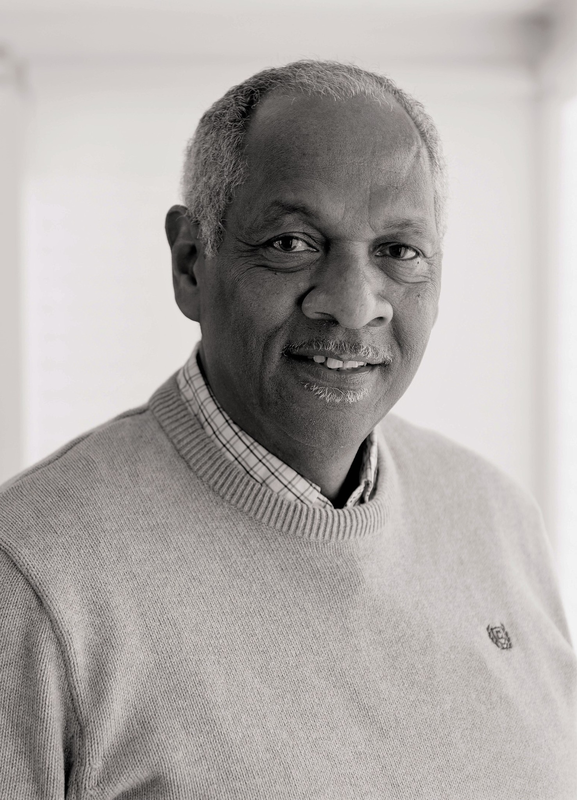
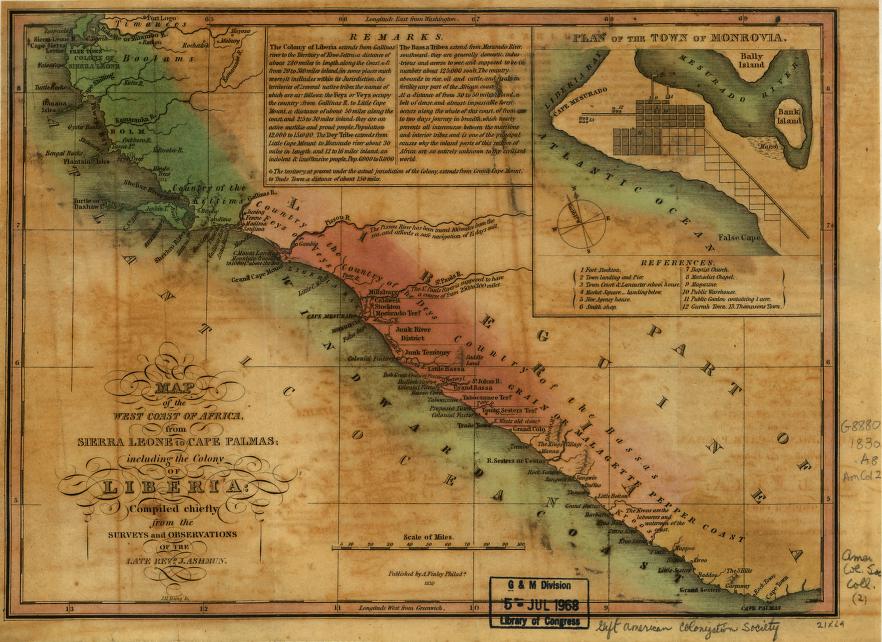
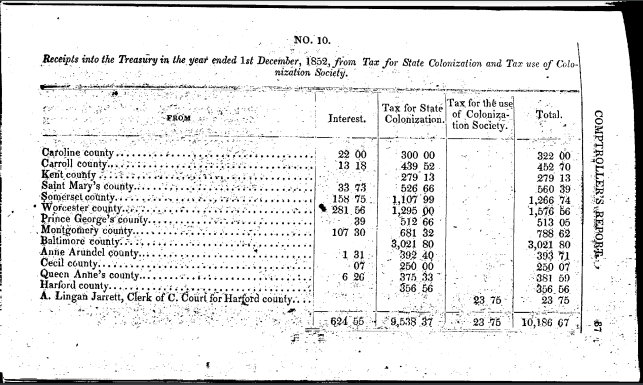
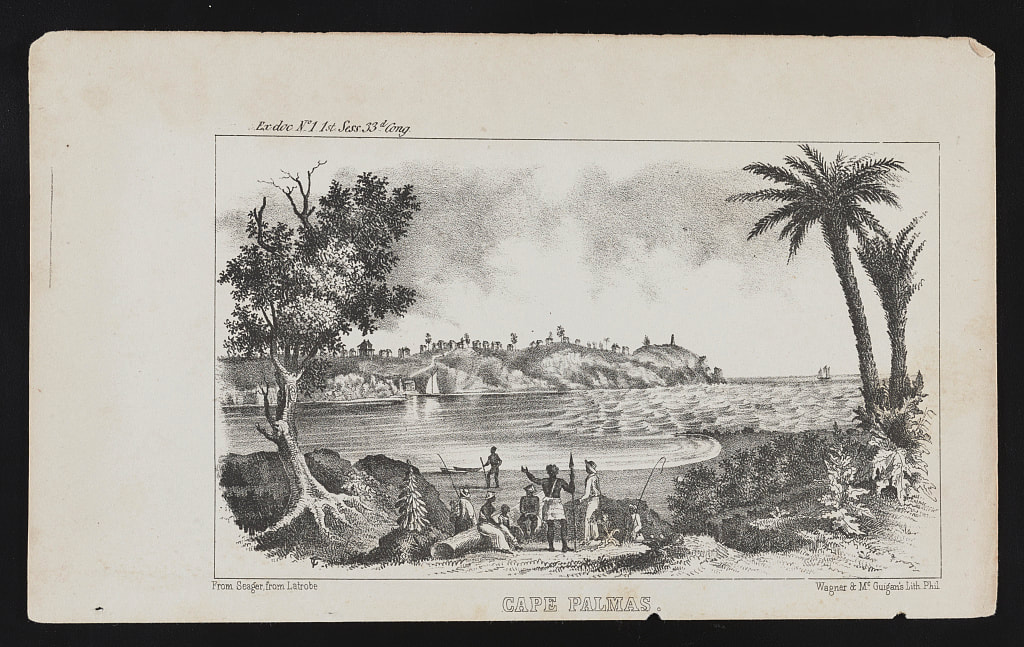
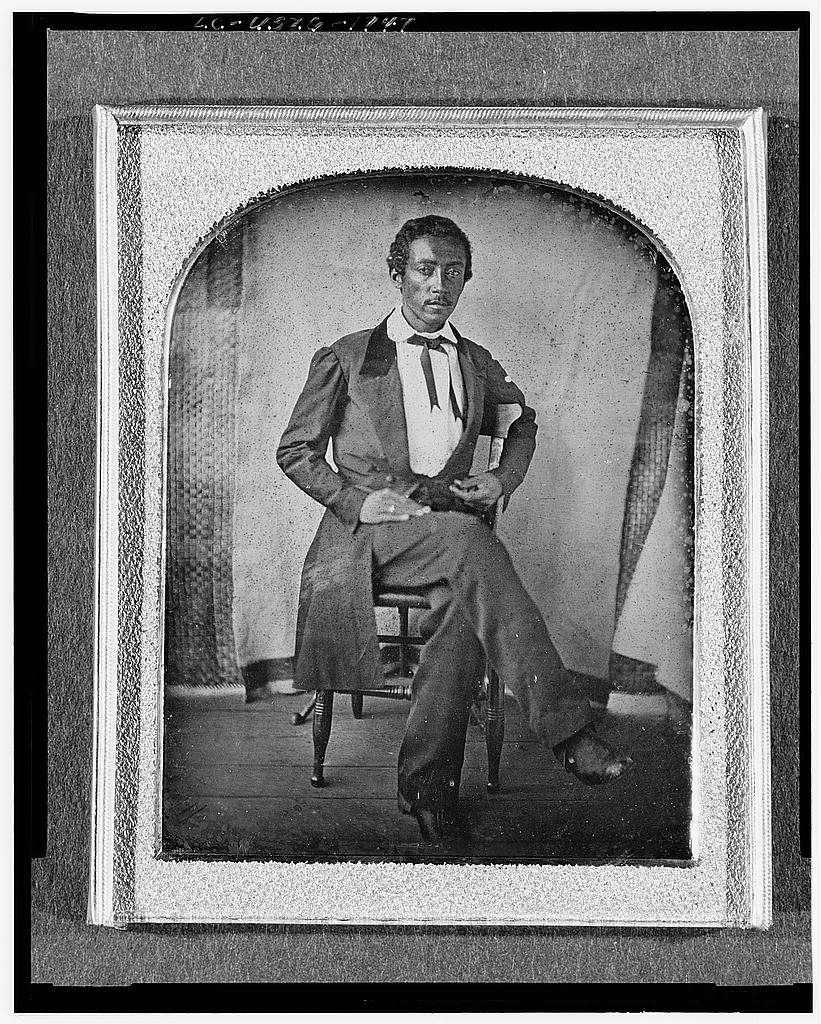
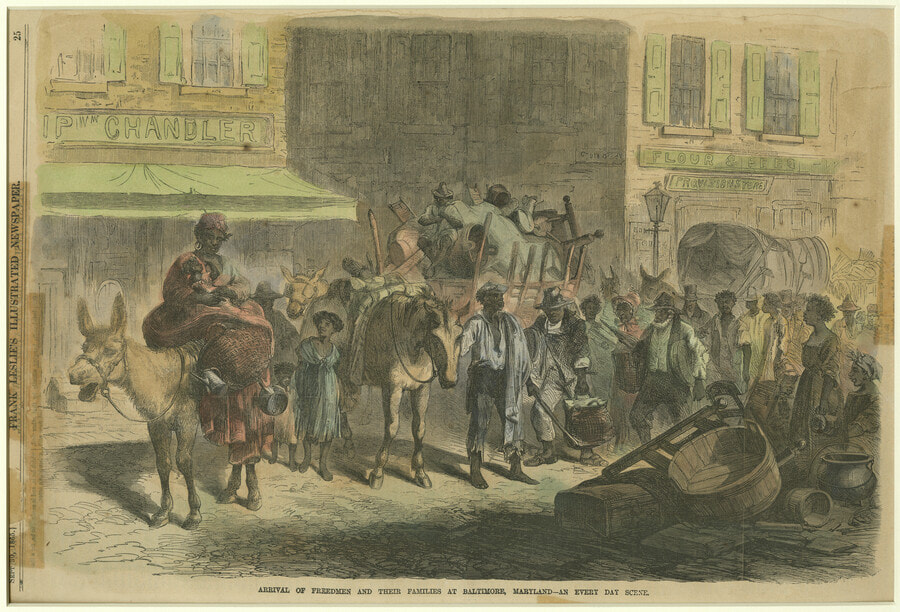
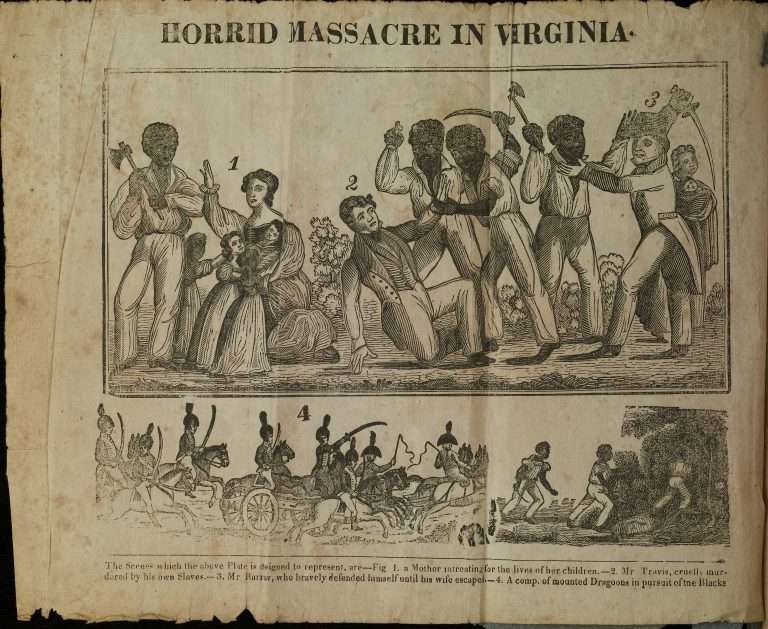
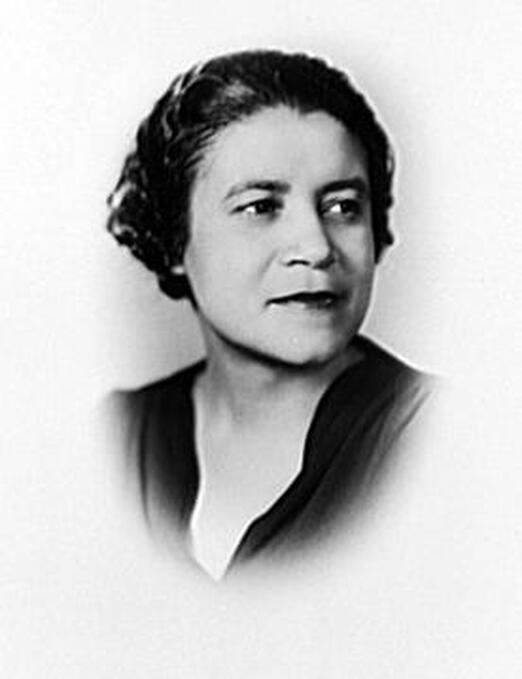
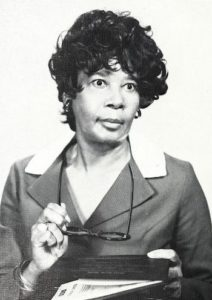
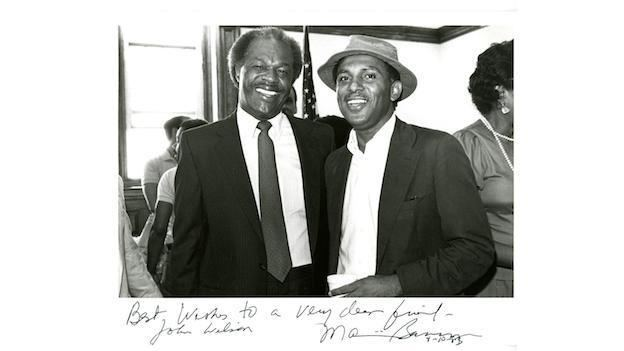
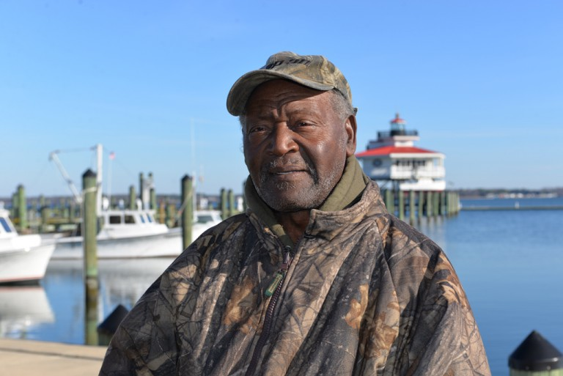
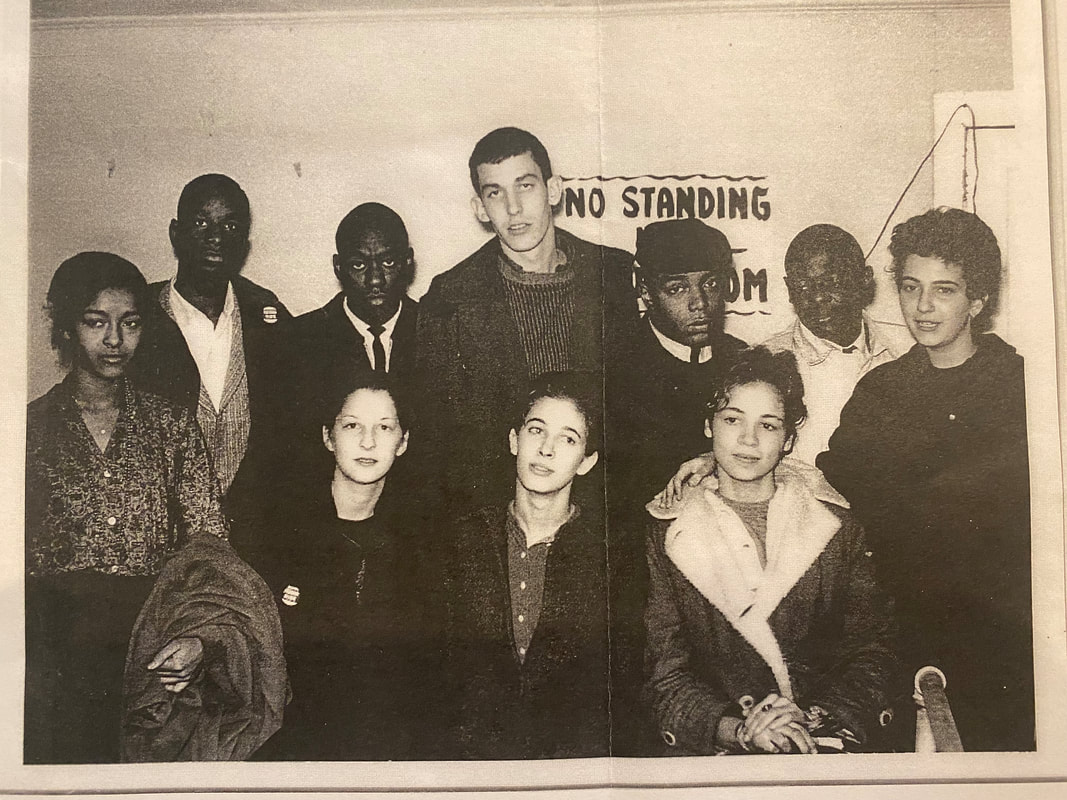
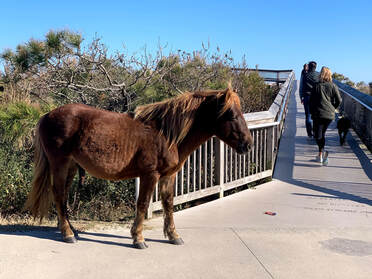



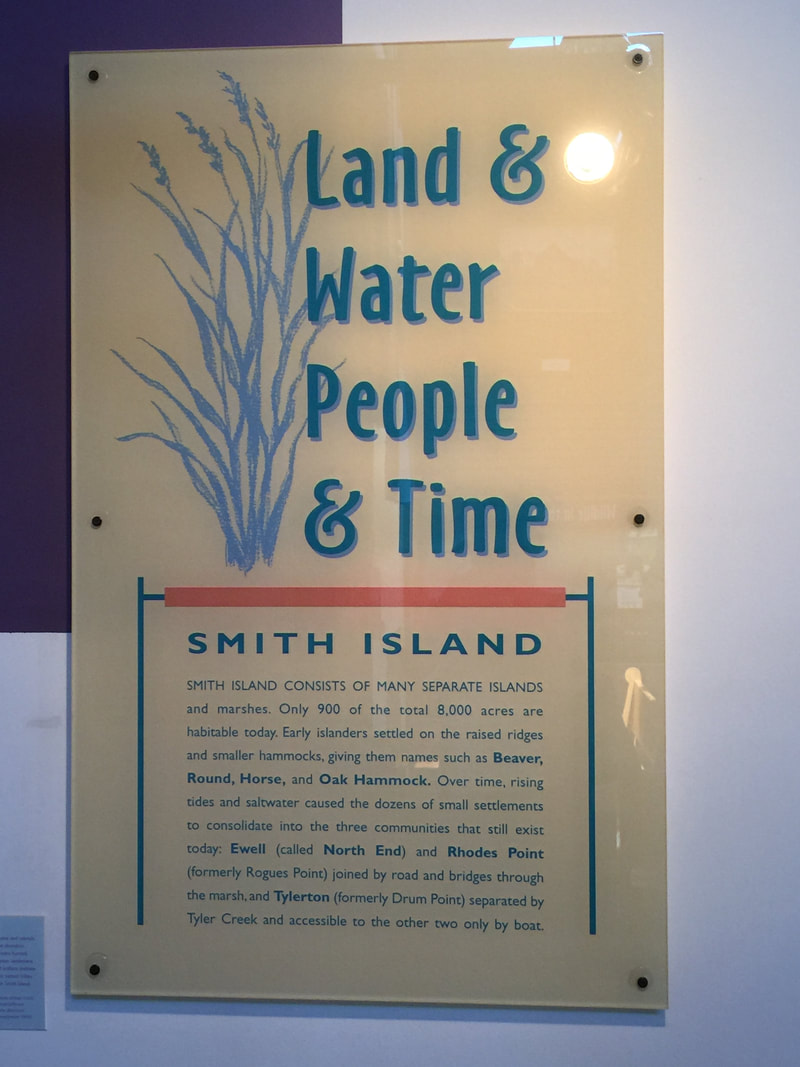
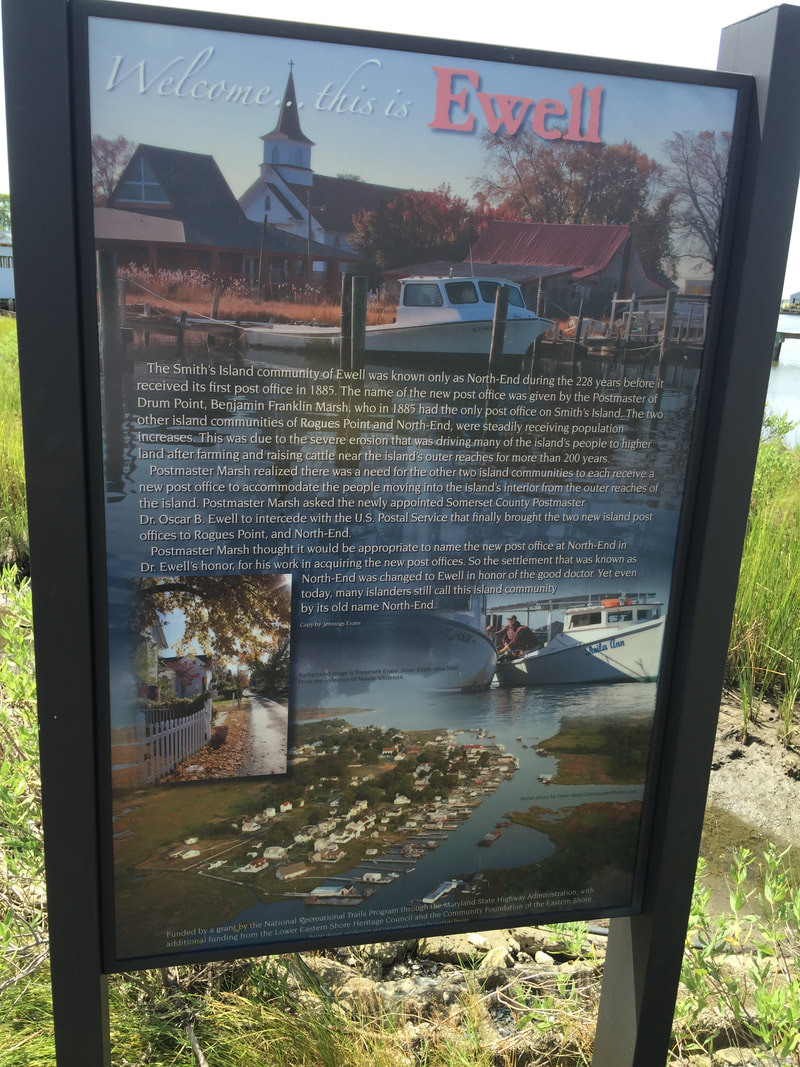

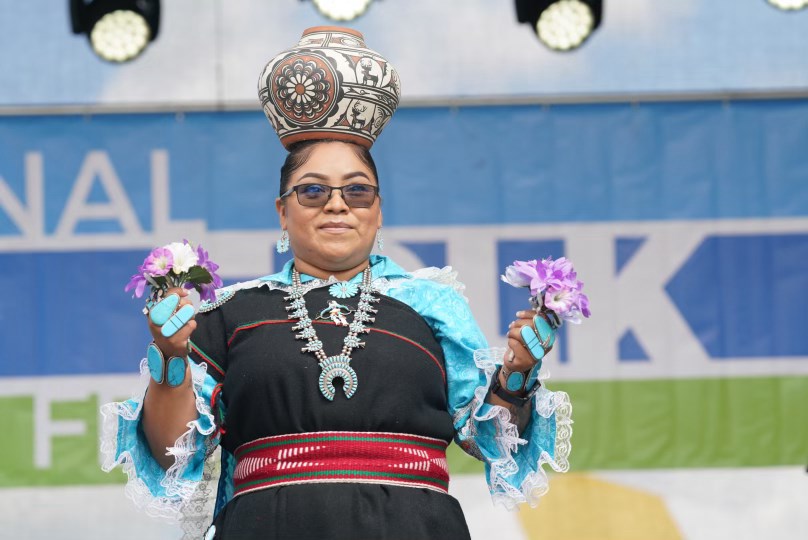
 RSS Feed
RSS Feed
